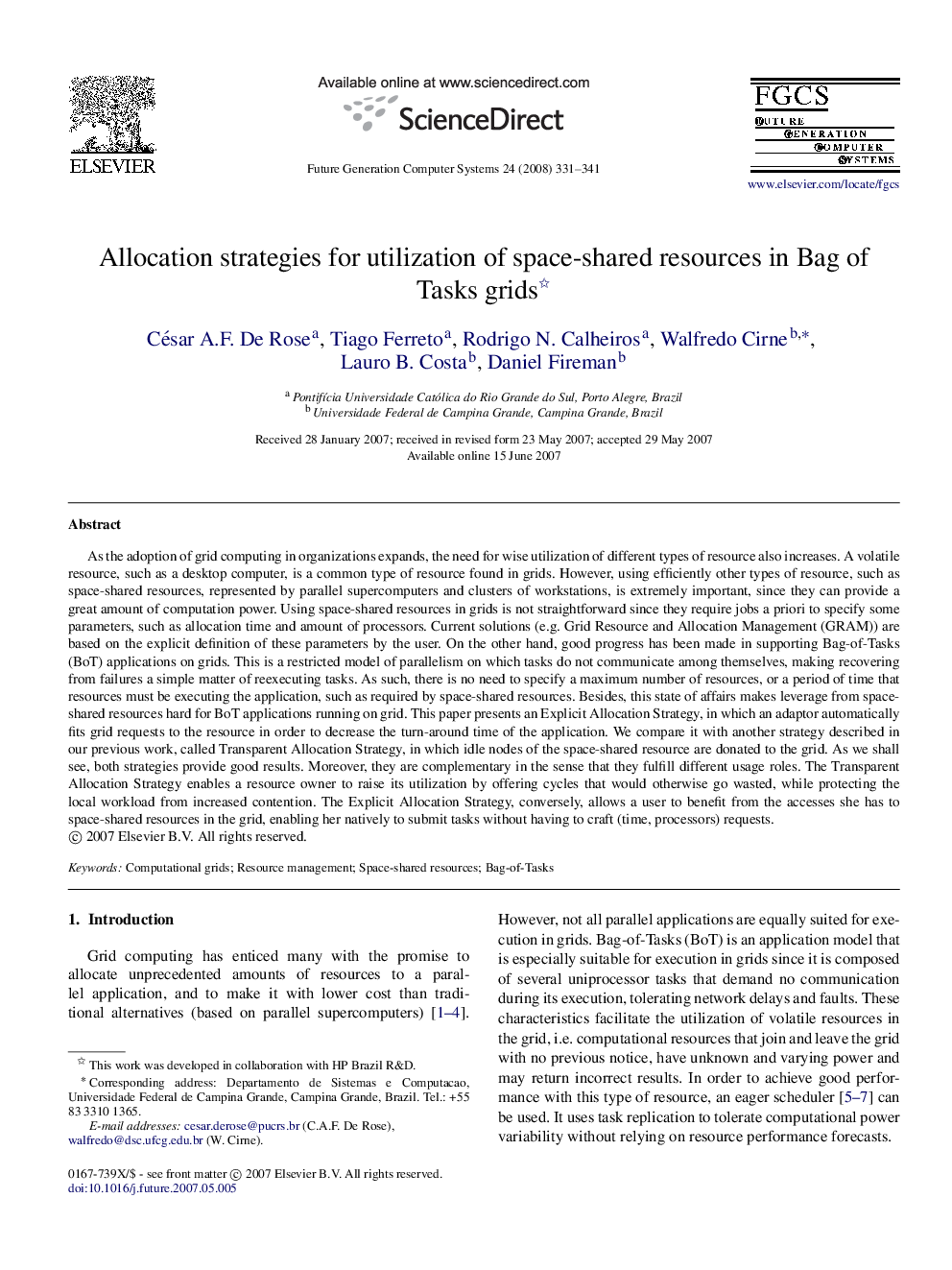| کد مقاله | کد نشریه | سال انتشار | مقاله انگلیسی | نسخه تمام متن |
|---|---|---|---|---|
| 425495 | 685756 | 2008 | 11 صفحه PDF | دانلود رایگان |

As the adoption of grid computing in organizations expands, the need for wise utilization of different types of resource also increases. A volatile resource, such as a desktop computer, is a common type of resource found in grids. However, using efficiently other types of resource, such as space-shared resources, represented by parallel supercomputers and clusters of workstations, is extremely important, since they can provide a great amount of computation power. Using space-shared resources in grids is not straightforward since they require jobs a priori to specify some parameters, such as allocation time and amount of processors. Current solutions (e.g. Grid Resource and Allocation Management (GRAM)) are based on the explicit definition of these parameters by the user. On the other hand, good progress has been made in supporting Bag-of-Tasks (BoT) applications on grids. This is a restricted model of parallelism on which tasks do not communicate among themselves, making recovering from failures a simple matter of reexecuting tasks. As such, there is no need to specify a maximum number of resources, or a period of time that resources must be executing the application, such as required by space-shared resources. Besides, this state of affairs makes leverage from space-shared resources hard for BoT applications running on grid. This paper presents an Explicit Allocation Strategy, in which an adaptor automatically fits grid requests to the resource in order to decrease the turn-around time of the application. We compare it with another strategy described in our previous work, called Transparent Allocation Strategy, in which idle nodes of the space-shared resource are donated to the grid. As we shall see, both strategies provide good results. Moreover, they are complementary in the sense that they fulfill different usage roles. The Transparent Allocation Strategy enables a resource owner to raise its utilization by offering cycles that would otherwise go wasted, while protecting the local workload from increased contention. The Explicit Allocation Strategy, conversely, allows a user to benefit from the accesses she has to space-shared resources in the grid, enabling her natively to submit tasks without having to craft (time, processors) requests.
Journal: Future Generation Computer Systems - Volume 24, Issue 5, May 2008, Pages 331–341